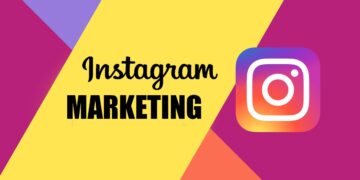Social Media Marketing (SMM) has evolved into an invaluable tool for brands aiming to solidify their online presence and connect with their followers. It involves leveraging various strategies across social media platforms to foster interactions, brand recognition, and meaningful customer relationships. The transformative impact of SMM on brand strategies is substantial, revolutionizing communication and expanding reach beyond conventional marketing methods.
Throughout this comprehensive guide, we explore the multifaceted aspects of SMM, highlighting its significance and influence on brand strategies. But before we proceed, let’s discuss five statistics highlighting the benefits of integrating social media marketing into small business campaign strategies.
- According to a survey by Oberlo, 73% of small businesses report that social media has effectively boosted their brand.
- Sprout Social found that 76% of consumers believe that small businesses should respond to social media messages within 24 hours.
- Data from HubSpot showed that businesses with 1000 followers on Twitter got 6% more traffic than those with fewer followers.
- A report by Social Media Examiner found that 78% of marketers see lead generation benefits with just six hours of social media marketing per week.
Next, let’s explore six case studies that display the benefits of successful SMM campaigns.
Case Studies of Successful SMM Campaigns
Studying accomplished SMM campaigns provides you with priceless insights. The campaigns presented below serve as exceptional case studies for your analysis.
Dove countered negativity by promoting positivity through the #SpeakBeautiful Effect campaign. Research-led tools led to 168K+ #SpeakBeautiful uses and 800M+ campaign impressions, showcasing the impact of follower understanding and engagement.
Nutella’s engaging content embraced brand fun across diverse social media channels, incorporating influencer partnerships and customer interactions to boost interactions.
Oreo excelled in real-time content strategy during a Super Bowl blackout. The tweet “Power out? No problem.” received 15K+ retweets, highlighting the value of creative thinking and timely engagement.
Airbnb’s Experiential Brand Storytelling
Airbnb distinguished itself through captivating visuals and user-generated content on Instagram, embodying the ‘Don’t just go there, Live there’ campaign. This approach showcased experiential brand storytelling.
Apple’s #ShotOniPhone & User-Generated Content
Apple’s #ShotOniPhone campaign amassed user-generated content on Instagram, redefining social media marketing.
Starbucks supported transgender youth through #WhatsYourName, demonstrating the brand’s commitment to social causes.
The Pillars of Effective SMM
Social media platforms have transformed into virtual communities, each with a unique culture and user base. From Facebook and Instagram to Twitter(now X), LinkedIn, TikTok, and others, each provides distinct opportunities for interaction. Understanding the nuances specific to each platform is vital to crafting compelling content. For instance, Instagram thrives on visual content, while Twitter demands concise messaging. Personalizing content to the platform’s users allows brands to relate effectively and demonstrate authenticity.
Strategic success in SMM begins with setting clear objectives that align with broader brand goals. Whether improving brand visibility, fostering interactions, generating leads, or driving conversions, each objective requires specific strategies. Importantly, these SMM goals should seamlessly integrate with the overall brand strategy, ensuring a cohesive and purpose-driven approach.
Crafting an Authentic Brand Identity on Social Media
At the core of a successful SMM, you discover the essence of genuinely portraying your brand’s identity. It’s all about maintaining a consistent thread of branding elements – encompassing logos, color palettes, and typography – to cultivate recognition and reliance. However, it goes beyond surface aesthetics. Your brand’s values, mission, and vision should reverberate through each of your posts. You breathe life into your brand by weaving in storytelling and forging emotional bonds beyond mere transactions.
Strategy and Creation of Content
Utilize content as your primary tool for successful Social Media Marketing (SMM). Leverage its wide-ranging variety as a critical advantage. Engage multiple senses through visuals, text, videos, and interactive components to amplify your influence. Demonstrate authenticity by incorporating user-generated content and partnering with influencers. Maintain a well-organized content calendar to ensure uniformity and reduce creative burnout.
Cultivating and Engaging a Specific Market Segment
Comprehending your followers is another step to effective social media marketing. By utilizing data and analytics, you gain precious insights to refine your content, ensuring it remains highly pertinent. The process of cultivating a community entails the careful fostering of discussions, active responses to feedback, and the creation of authentic bonds. Through meaningful engagement, you foster the growth of trust and loyalty – two vital components for harboring long-lasting relationships between your brand and customers.
Harnessing Social Advertising
Utilize paid advertising to boost your social media marketing (SMM) efforts. On every platform, you’ll find an array of advertising choices, each finely tuned to cater to distinct demographics. By focusing on targeted advertising, you’ll optimize your Return on Investment (ROI), presenting ads exclusively to those inclined to relate with them deeply. The process of rigorous A/B testing will be at your disposal to refine and optimize strategies with up-to-the-minute data.
Evaluation and Analysis of SMM Performance
Refining your SMM strategies requires you to prioritize practical evaluation. It would help if you prioritized Key Performance Indicators (KPIs) like interactions, conversion, and click-through rates. To facilitate data collection, utilize tracking tools that empower you to make iterative enhancements to content quality, posting times, and market segmenting.
Navigating Trends and Challenges
Remaining involved in emerging platforms and trends becomes integral within the ever-changing sphere of social media marketing (SMM). You must monitor algorithmic shifts that might disrupt your visibility, requiring you to adjust swiftly. Whenever negative feedback arises, handling it adeptly through crisis management is essential, effectively protecting your brand’s reputation. As you navigate this landscape, remember to find the right equilibrium between authenticity and professionalism. This equilibrium guarantees relatability without jeopardizing the integrity of your brand.
Here are ten significant trends in social media today:
1. The Dominance of Short-form Videos
Short-form videos, especially on TikTok and Instagram Reels, remain potent tools for follower engagement. The popularity of these videos is attributed to their optimization for quick social media consumption, ease of creation using online video editor tools, and their potential for low-cost yet impactful content production.
2. X’s Continued Growth
Formerly known as Tiktok, X’s expansive growth continues, positioning it as a potential “super app” integrating various functionalities.
3. Increased Investment in Videos
Businesses recognize the significance of video content and invest more in professional software, such as an AI-powered video editor and audio joiner, to cater to the demand for visual content on platforms like Instagram and YouTube.
4. Rise of Edutainment Content
The fusion of education and entertainment, known as “edutainment,” gains traction. Creating informative yet engaging content resonates with viewers, mainly through short-form videos.
5. Focus on Niche Communities
Niche communities and platforms like BeReal attract attention. Brands are exploring ways to engage with closed communities, providing distinct interactions compared to mainstream media.
6. Evolution of Social Commerce
Brands are adapting to evolving social commerce trends, utilizing shopping features on social media platforms. Consumers are becoming more comfortable making direct purchases through social media.
7. Flourishing Creator Economy
The creator economy is thriving, with more individuals adopting content creation as a career. Businesses collaborate with content creators to effectively reach their intended consumers.
8. Employee Advocacy and Authenticity
Employee advocacy gains traction as a social media trend. Brands encourage employees to share authentic experiences, enhancing brand trust and authenticity.
9. Shifting Sustainability Messaging
Brands are changing how they communicate their sustainability efforts, focusing on authentic and meaningful messages that harmonize with consumers.
10. Metaverse Brand Engagements
The metaverse concept influences brand strategies, prompting creative engagement within virtual spaces and offering immersive experiences.
The Future of SMM for Brands
As SMM evolves, brands must anticipate forthcoming trends.
Artificial Intelligence, AI Avatar features, Augmented, Virtual, and Mixed reality are set to play pivotal roles. Personalized experiences and immersive content will redefine engagement. The integration of SMM into omnichannel marketing will also shape seamless customer journeys.
Conclusion
Within the vibrant landscape of SMM, you find yourself with a canvas to artfully craft your brand’s story and forge deep connections with your followers. Your journey involves:
- Understanding the dynamics of various platforms.
- Setting distinct objectives.
- Genuinely expressing your brand’s essence.
- Interacting with finesse.
These form the core principles of impactful SMM. As you embrace ethical norms and innovation, you skillfully navigate the complexities of the digital realm, cementing lasting bonds and cementing your position in the future of marketing. Remember, your path to sustained success in SMM lies in your ability to adapt, evolve, and continuously learn.




































